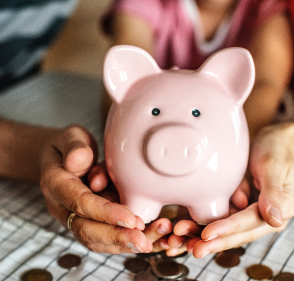Only a parent can open a Junior ISA for their child – but afterwards anyone can contribute, including grandparents and godparents, aunts, uncles and family friends.
Junior ISAs come in two types, depending on what you want to put inside – ‘cash’ Junior ISAs and ‘stocks & shares’ Junior ISAs.
The cash version works just like an ordinary savings account, where you get paid interest either every month or every year. The only differences are that you can’t take any money out until the child turns 18 and you won’t have to pay any tax on the interest.
With the stocks & shares version, you invest money for your child in the stock market. Again, money inside the Junior ISA is locked away until the child’s 18th birthday and it grows tax-free. Think of an ISA like a bag to protect your money from tax. You’ll still need to choose what investments to put inside.








